Ever wondered how to cook a green walnut, or what you can make with them? Or maybe you're like me, and you see them plopping on the ground every year, but didn't ever imagine they could be food.
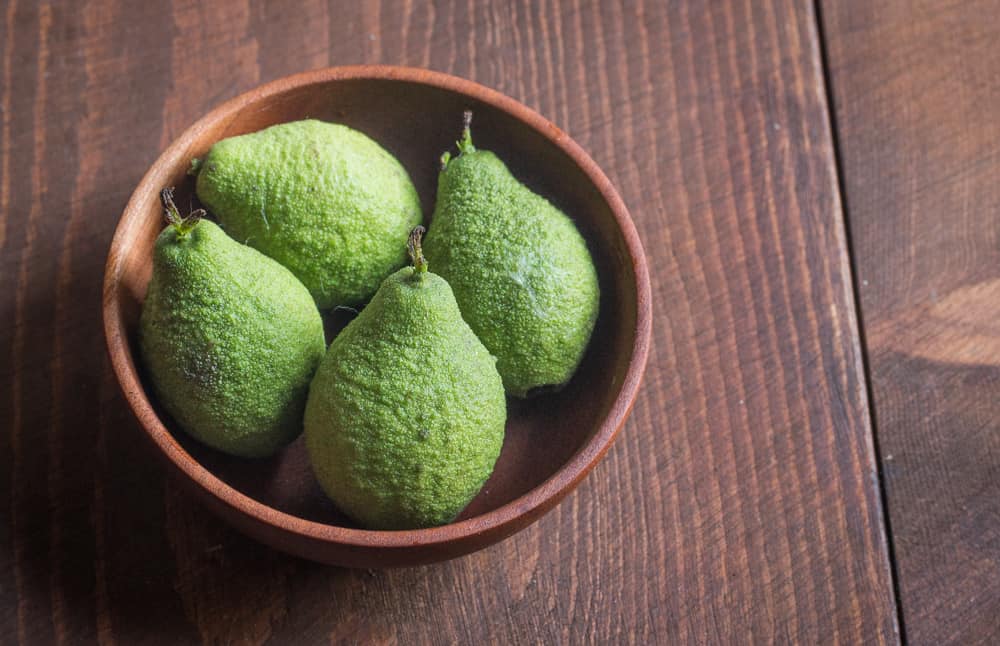
Green walnuts (young, unripe walnuts harvested before the shells have formed) are a traditional food in a number of places around the world and one of the most interesting things I've cooked with.
At first glance, it might seem strange (or awful if you taste them raw) to think about using unripe nuts as an ingredient, but it's real, and I have plenty of fun examples of interesting things you can make with them inspired by traditional recipes. In this post I'm going to cover the basics: how and when to harvest them, as well as some of the things you can use them for.
 Types of nuts you can use
Types of nuts you can use
I cook unripe black walnuts (Juglans nigra) exclusively, but some traditional European recipes call for English walnuts. I assume they can be cooked interchangeably, but I've only worked with black walnuts myself.
Unripe hickory nuts and pecans, as well as butternuts (which I have used) can probably be used in a similar way, although the aroma of green hickory and pecans I've smelled isn't as intense as black walnuts or butternuts. For the best results, use black walnuts or butternuts.

Harvesting
You're looking for meristematic (young) that you will harvest directly from the tree before the shell forms. While it can be tempting, don't harvest green nuts directly from the ground- those have been rejected by the tree and are not good for eating. Look for nuts about the size of a small ping-pong ball, although sizes can vary a bit depending on the individual tree and time of year.
Look for green nuts that are easy to cut
An easy way to tell if a nut has started to form the shell inside is by piercing the green nuts with a paring knife-if you hit resistance, you're too late-try again next year. Cut open a few, especially if you're harvesting from different trees.
If the shell has started to form, you will know. Nuts that are starting to form shells but are still green can be used to make nocino, vin de noix, and infusions as the nuts are discarded after their flavor has been extracted.
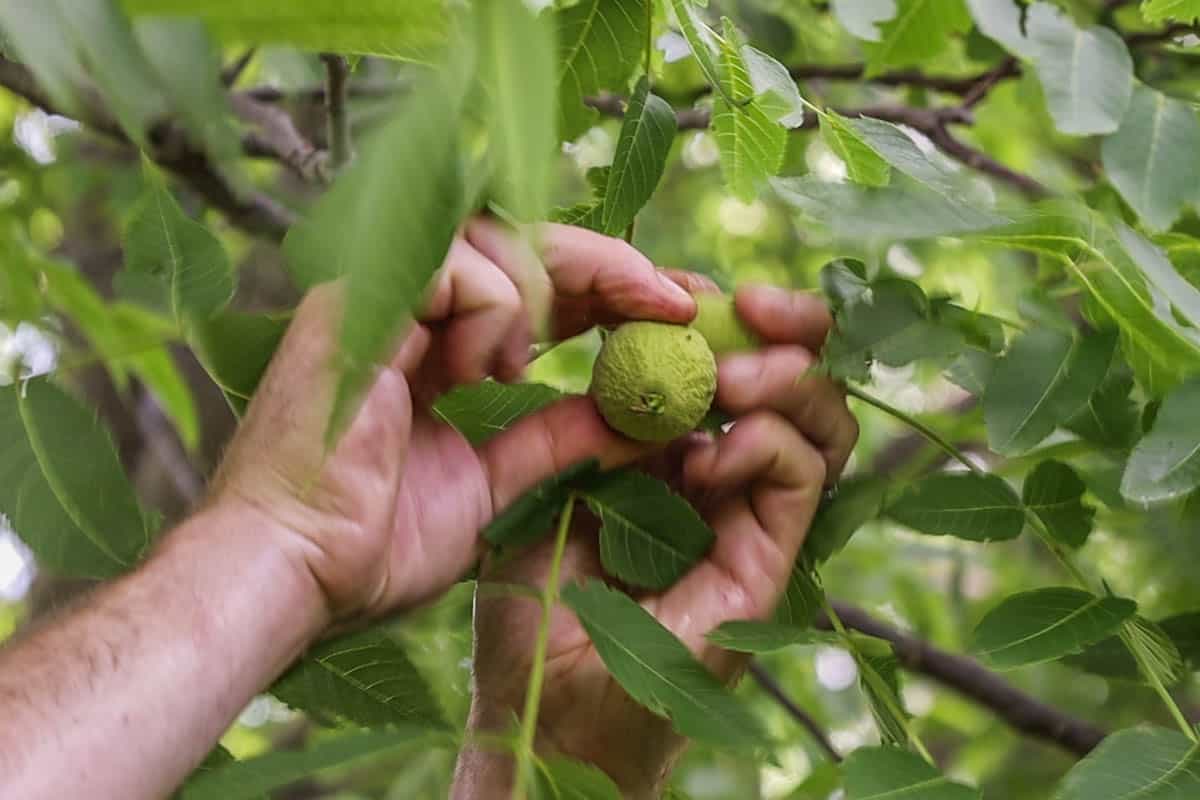
There's a window for harvesting the perfect unripe nut (typically mid-June here in the Midwest where I am) and, depending on what you want to do with them, it can be longer or shorter.
Small nuts can be processing into sauces and and liquors like nocino, larger unripe nuts are the best for making the traditional black walnut jam / preserves-one of my favorites.
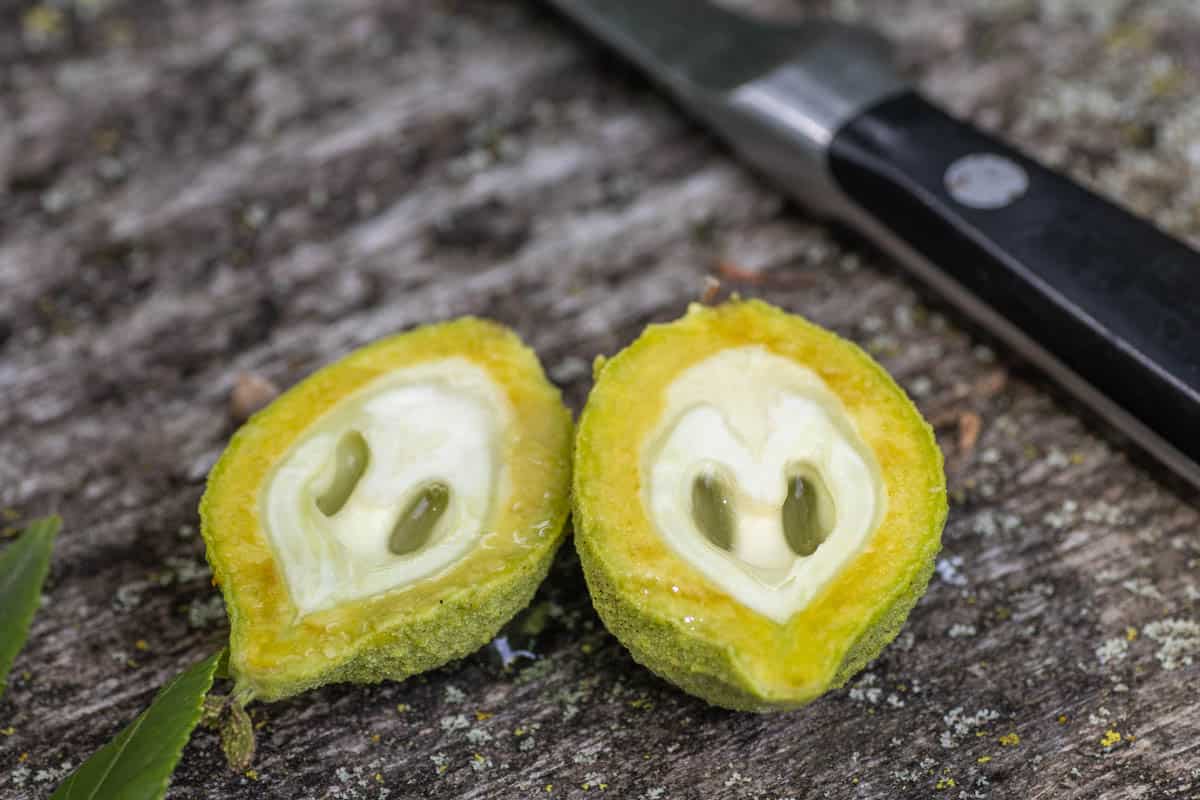
Storing Green Walnuts
After the walnut are harvested I usually refrigerate or keep them as cool as possible. Over time they'll start to discolor and lose their bright green color, but, in a pinch, for a short period of time, they can be stored at room temperature.
I once stored 300 pounds of green walnuts in a garage for three days before the distillery could pick them up to make nocino from them and didn't notice a large issue. I kept the nuts in laundry bins for extra air-flow and it seemed to help. You could probably freeze green walnuts, but I never have as I harvest relatively small amounts and process them quickly.

Sustainability
Harvesting black walnuts and the leaves of the tree is one of the most sustainable things I know of. During a mast year, I've seen single trees drop multiple hundreds of nuts. As only so many trees can be supported in a certain area, taking the small amount needed for most green walnut recipes doesn't constitute any sort of tangible threat to black walnut trees.
Squirrels harvest walnuts for food too, but they're so adept and harvesting and caching them that I doubt humans could ever compete with them.
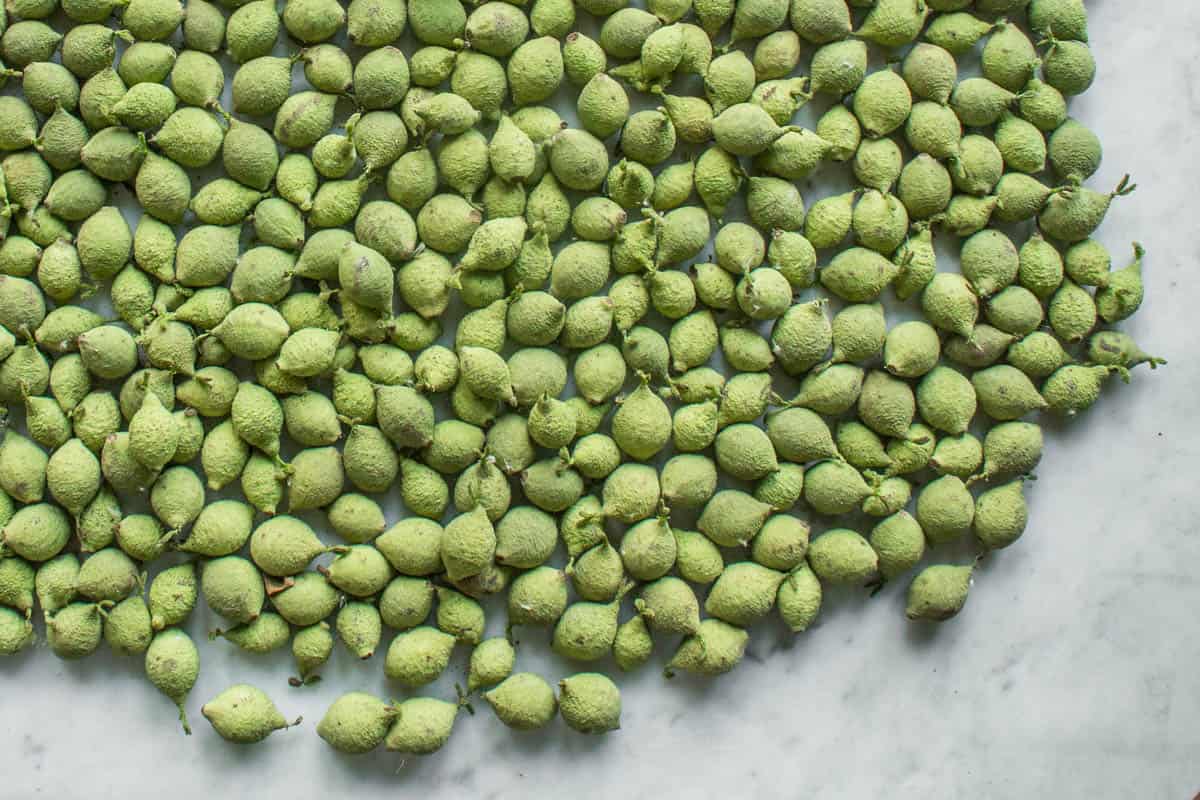
Cooking with Green Walnut Leaves
Unripe black walnuts aren't the only part of the tree that has traditional uses. The young leaves of the tree (and they must be young or they won't have a strong aroma) also have a place in traditional cooking, and I have a number of references to them being used to make piquant sauces from early American cook books.
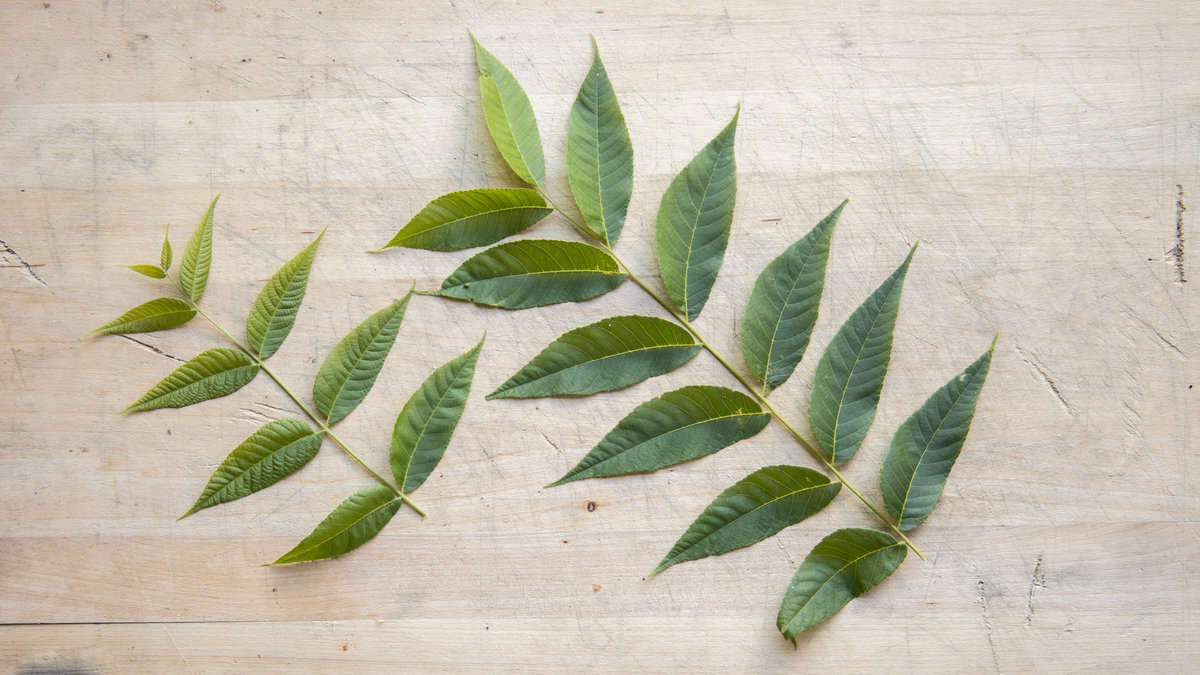
Processing Green Walnuts
Just like with ripe walnuts, green walnuts will stain anything and everything black (the mature husks are also used as a dye). To get around the staining issue, I harvest and process them wearing gloves. If you don't wear gloves, your hands will look like crypt-keeper hands, with the stains remaining up to a few weeks. You've been warned!
Peeling

Some recipes call for peeling or paring the unripe nuts. Using a paring knife takes some talent, and most household vegetable peelers aren't good enough. Kuhn Rikon peelers are a standby in professional kitchens and are the best tool I've found for peeling unripe walnuts for making walnut jam/preserves.
Soaking
Many recipes, (sans liquors and infusions) will instruct you to soak your unripe nuts in water for a period of time before proceeding with the rest of the recipe, similar to soaking liver or organ meat in water for a period of time before cooking. Some of the compounds in the nuts, especially tannins and bitterness, are water-soluble, meaning that the longer they're soaked, the more mild the flavor of the finished product can be. It's easy, but it takes some time.

Green Walnut Recipes
There's a surprising amount of traditional recipes-here's all I know of so far. If you have any to add, please leaves a comment. Links to the recipes I have are at the bottom of the post.
Walnut Ketchup
A sort of sour, punchy sauce reminiscent of steak sauce, walnut ketchup is one of the more well-known condiments made from the unripe nuts. There's also recipes for walnut ketchup that call for only the leaves.
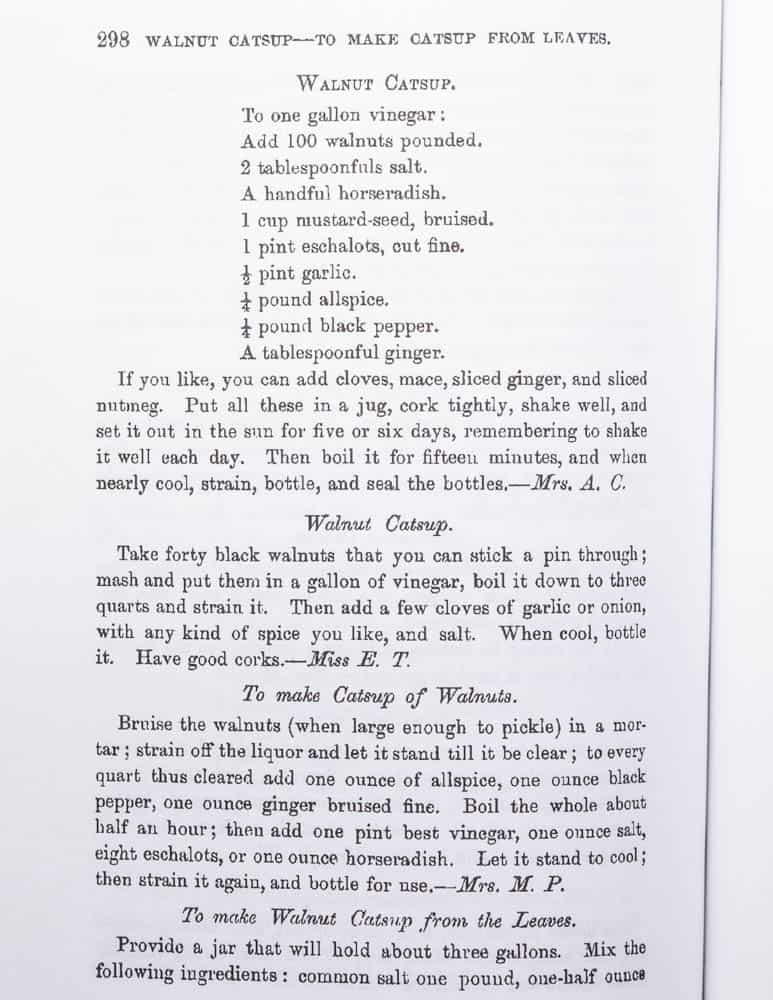
There's lots of variations in the recipes, with some calling for pounding the nuts and squeezing out the juice (I had no success with that) and some just using crushed green nuts to infuse a liquid. My favorite version uses chopped, cooked nuts, with the whole mixture getting pureed into a sauce to finish. The finished product reminds me of steak sauce.
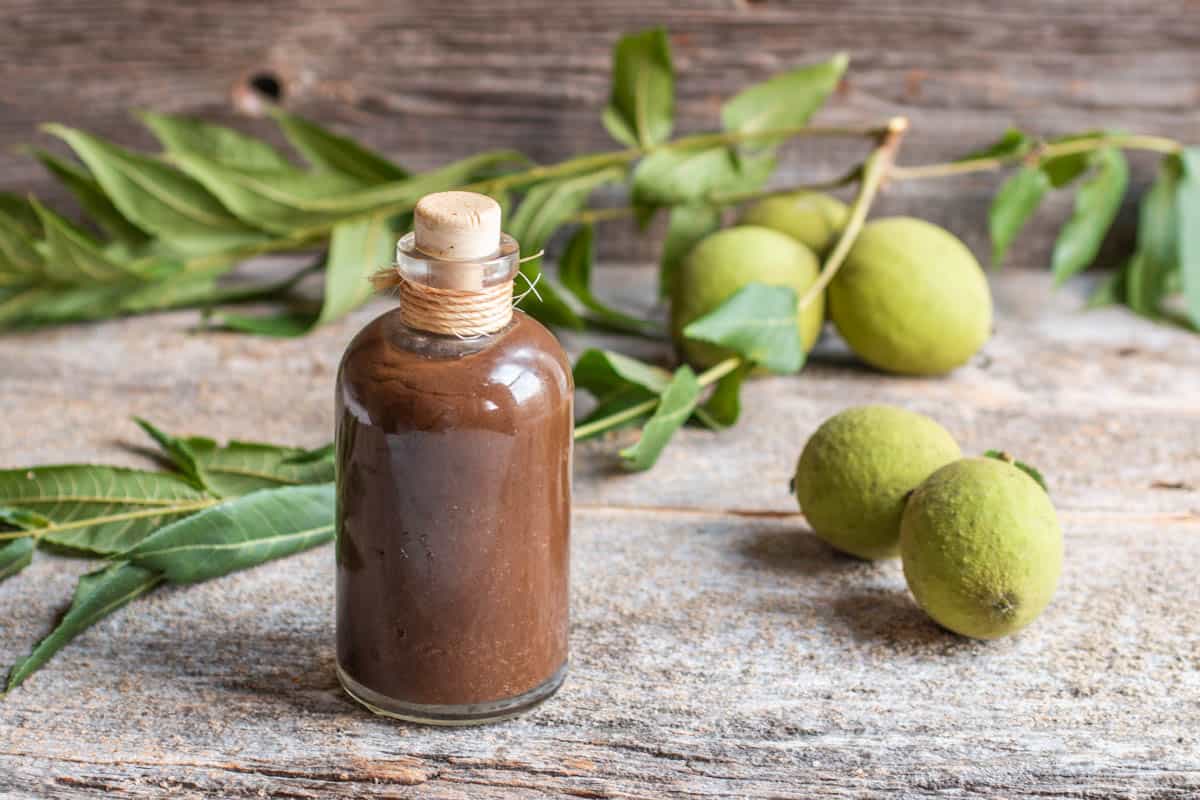
Pickles
Walnut pickles are an English thing I've never understood. The nuts are cut into slices, soaked in water to calm them for a while, then boiled in pickling liquid. I find the texture unpleasant and I don't recommend them personally, but they're a thing.
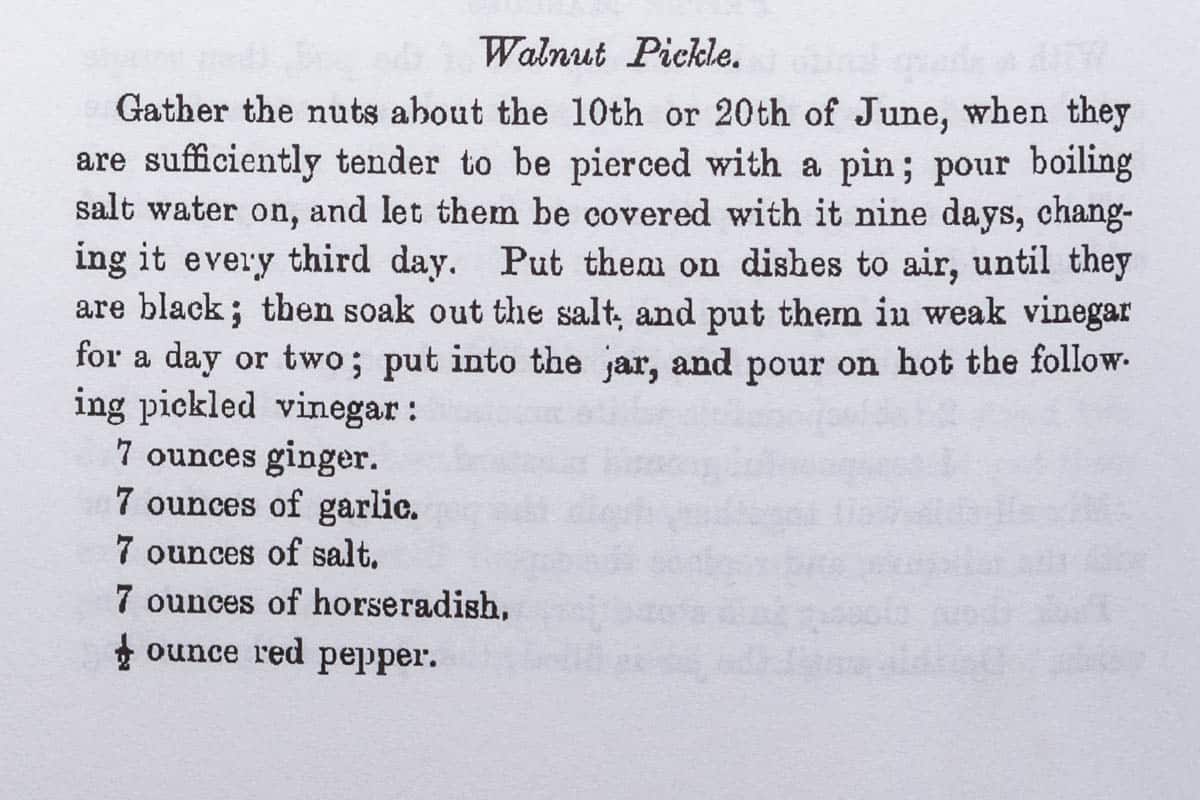
Bay Sauce
Bay sauce is one of the more interesting things here as it doesn't use the unripe nuts. Essentially, it's a thin, heavily seasoned sauce infused with horseradish, onions, salt, and young walnut leaves.
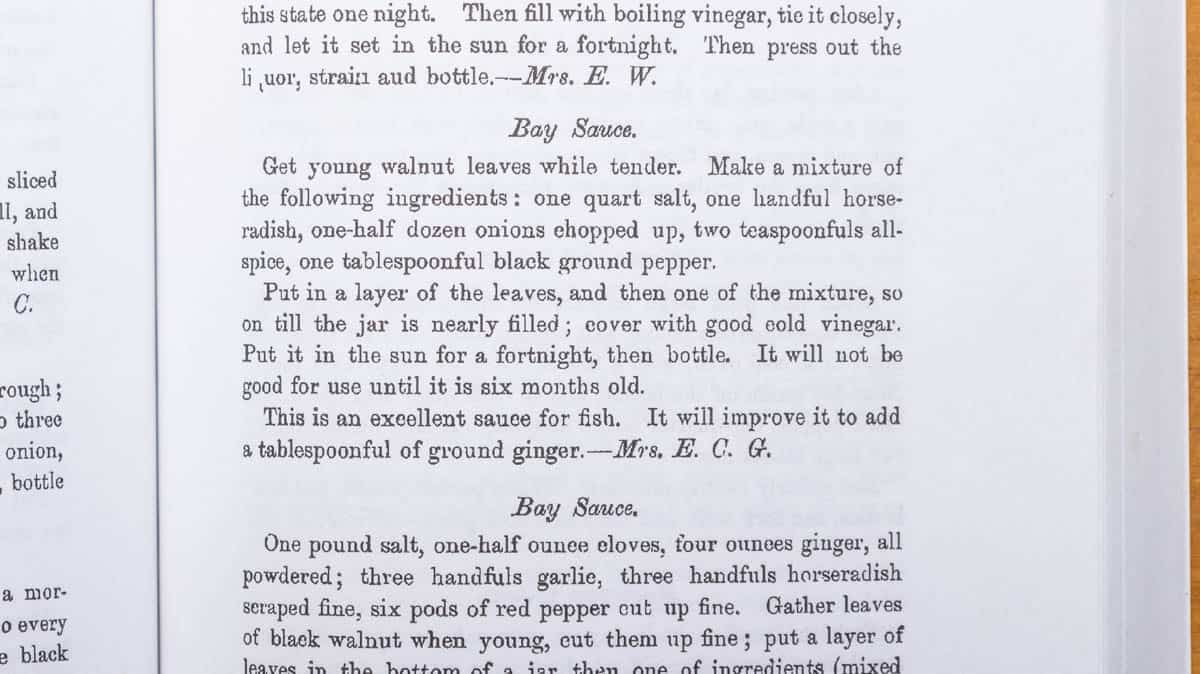
It tastes like a rich infused vinegar-great with fish or added to sauces and dressings. The age of the leaves is important here, and only very young, bright green spring leaves should be used as older leaves lose their aroma as they grow.
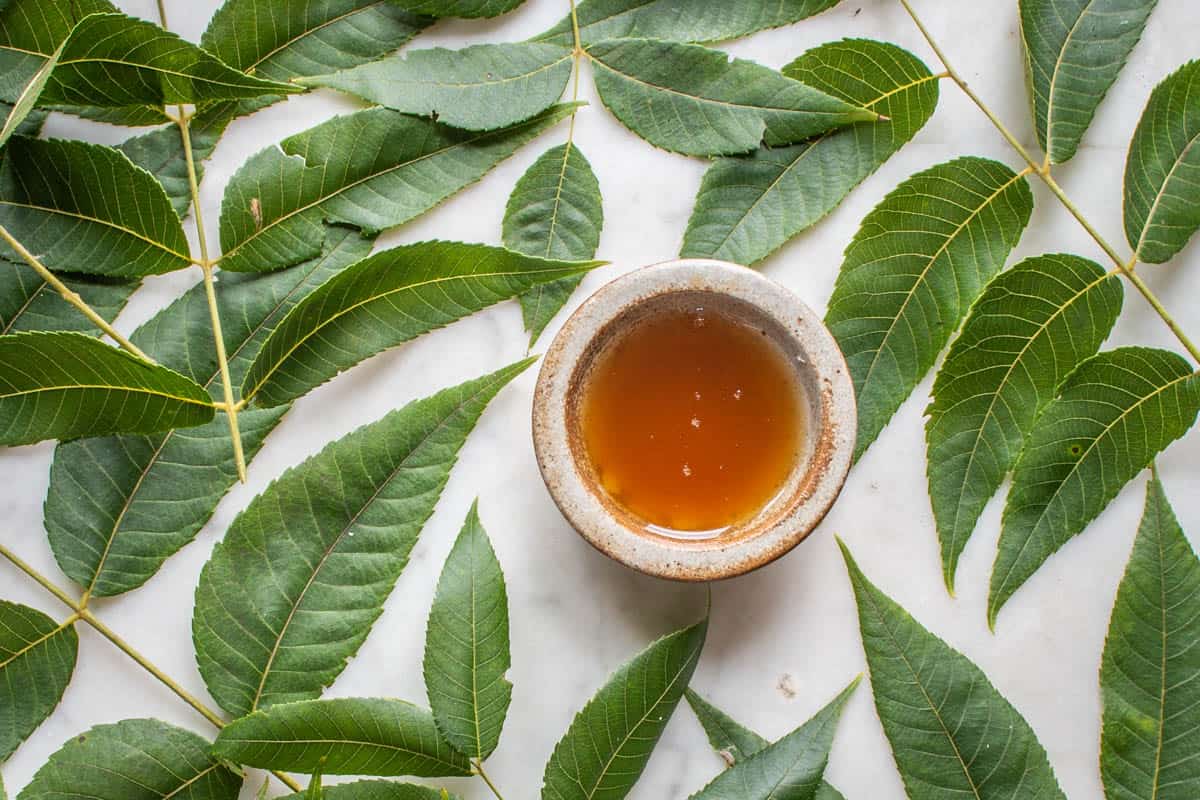
Walnut Jam
One of my all-time favorite preserves. This isn't jam in the sense most will think of in the United States, rather, it's a preserve of young nuts simmered in syrup. The nuts are peeled before cooking, pierced with a fork (or similar tool), soaked in water for a period of time, then simmered in heavy syrup flavored with lemon and vanilla and stored, jarred, in a pantry.

The nuts turn black during the process and look like dark jewels, they're eaten whole, or cut into pieces as pictured above. I like to serve them after dinner with cheese and a small glass of sherry. The texture of the unripe nuts inside the pared husk is the best part: soft and tender, reminding me of cheese or bone marrow. It's a fascinating use of the entire green nut.
The preserves are probably most well known in the caucuses and Armenia, but I've also seen Greek recipes for them, where the preserves go by the name Karitho Glikko.
Molasses
Not a traditional recipe to my knowledge, green walnut molasses is something I made as an experiment. I was inspired to try making a syrup similar to Italian mugolio or pine cone syrup where you take unripe walnuts, cut them in half, and mix with twice their volume of good (brown or non-white) sugar and leave at room temperature.
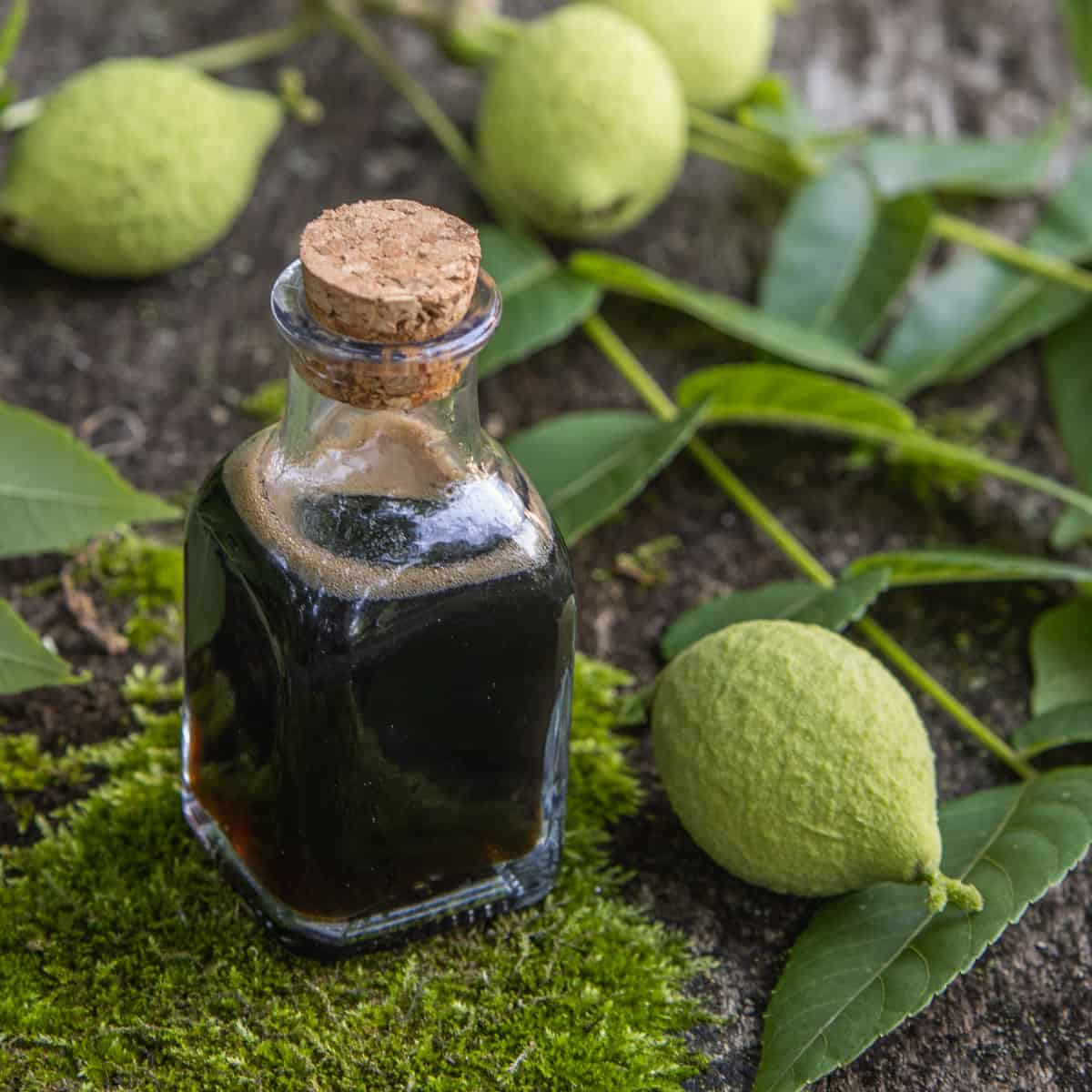
Over time, the walnuts release liquid into the sugar, which causes the mixture to ferment and dissolve most of the sugar.
After a couple weeks, you bring the whole thing to a simmer, strain and discard the nuts, and jar the syrup, which can be used in baking, or as a replacement for other sweeteners, although it will still have some tannins. I like to use it in drinks where some bitterness will be welcome, as well as in baking. I may use it in small amounts like maple.
Breakfast: wild rice, black caps, yogurt, walnut molasses and fresh cracked black walnuts.
Green Walnut Liquors and Infusions
One of the most popular traditional uses of unripe walnuts is in liquors and infusions. So far, I know of three, but I can only assume there's more. If you know any others I'm not aware of, please leave a comment.
Nocino
Nocino, an Italian liquor made from infusing cut young walnuts in everclear or another flavorless spirit like vodka, is probably the most well-known. It takes a long time to mellow, and is usually ready in about 6-8 months.

Vin de Noix
Essentially the French cousin of Italian Nocino, vin de noix is a milder drink made from red wine fortified with brandy, using a smaller amount of unripe walnut than nocino. I prefer it over nocino, personally.

Ratafia
Ratafia is the Spanish equivalent of nocino and vin de noix. Unlike the others, Ratafia includes a number of aromatic ingredients and spices. The finished products I've tasted friends have brought to me or sent from Spain are reminiscent of Jägermeister.
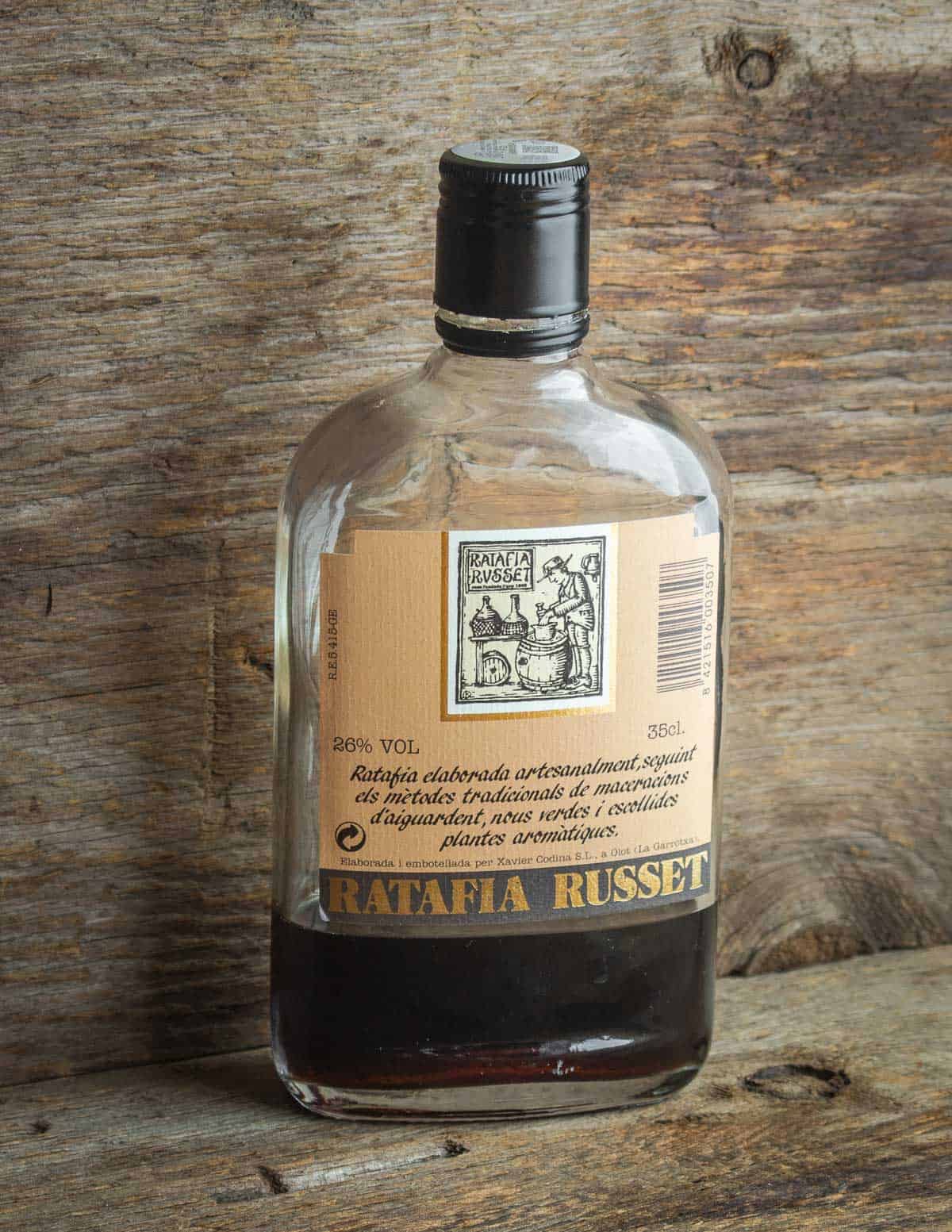
I hope you've enjoyed learning about a few ways you can cook with green walnuts. If you have anything to add, or, especially any other traditional preparations you don't see here, please leave a comment. I love adding new things to the list.
Green Walnut Recipes
Nocino, The Black Walnut Liquor

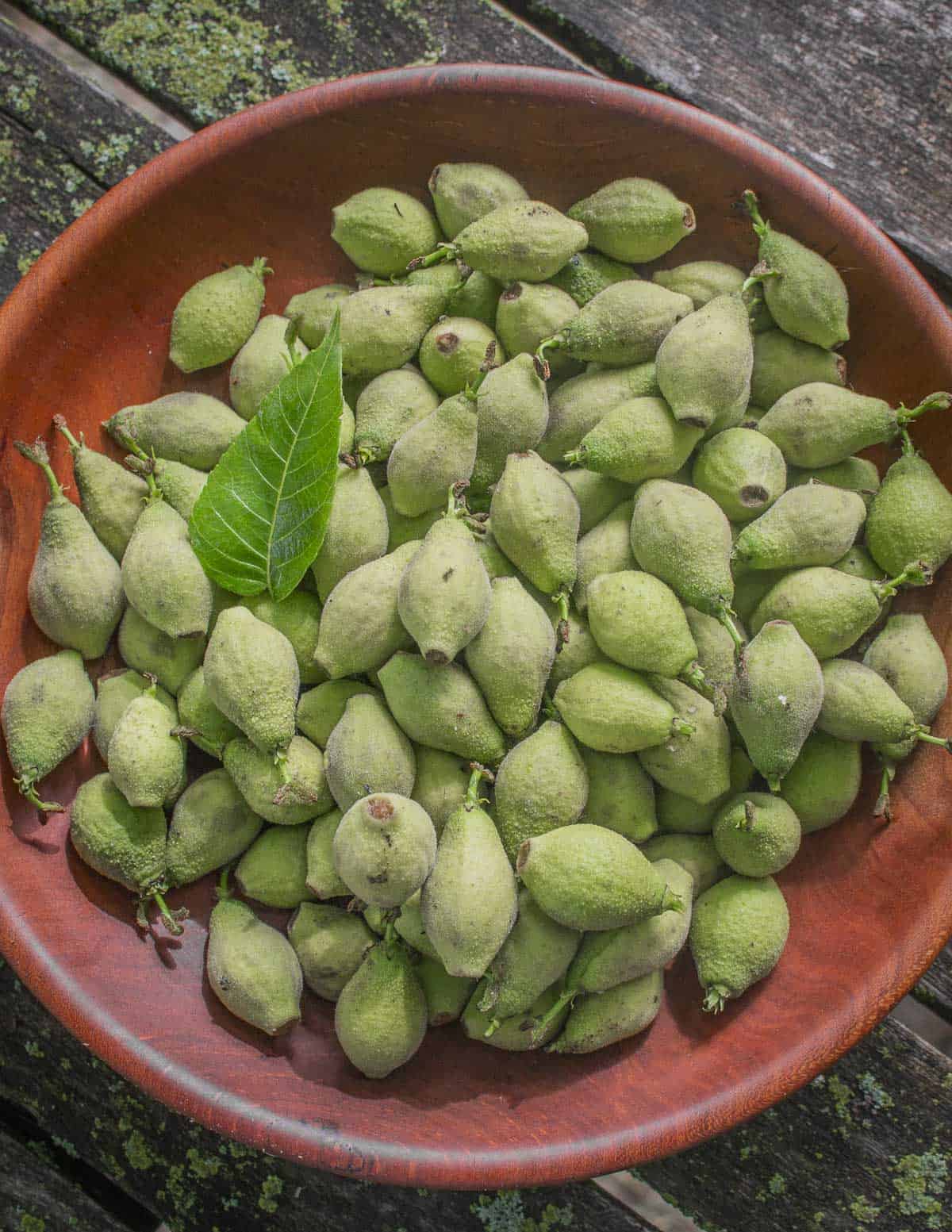 Types of nuts you can use
Types of nuts you can use 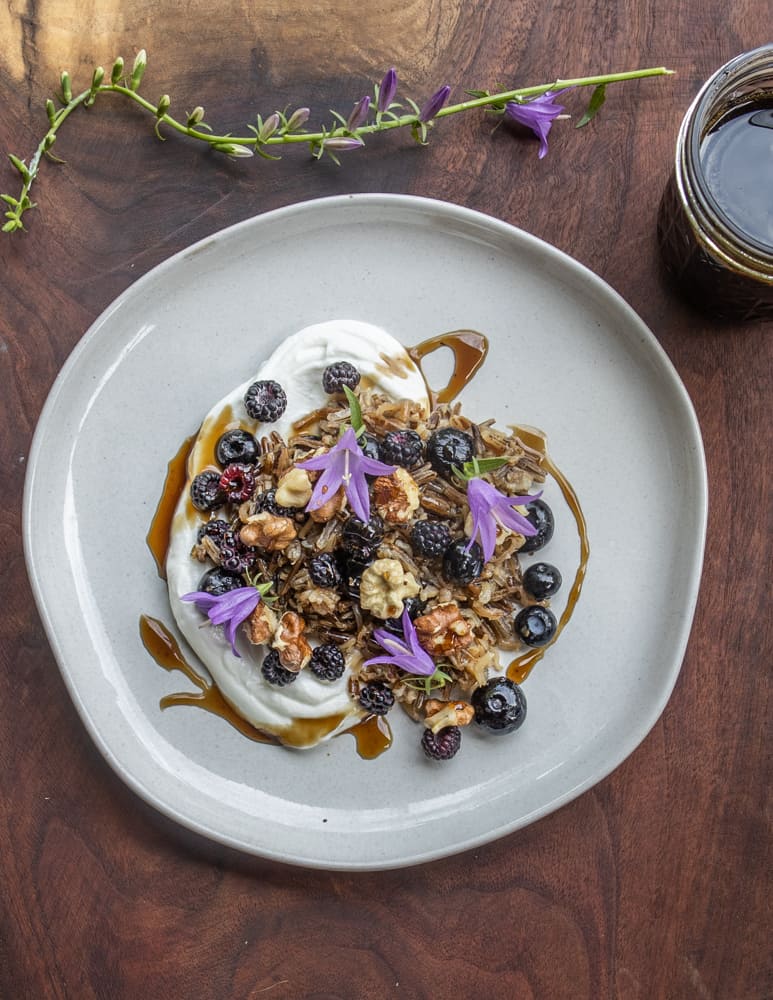
Jerry Yada
Im Jerry Yada very needed valnut seed n leafy
Maija
Thank you for bringing all these recipes into one place! I’ve tried nocino and vin de noix before, I’m really excited to try the jam and molasses this year!
Do you have any thoughts or further experience about using green hickories for these recipes? I’ve found a carya Glabra and tomentosa nearby, and right now the husks smell spicy and delicious. I read that they can be less punchy and bitter than walnut husks, so want to give it a go with a nocino variant this week…seen any such experiments?
Alan Bergo
Maija, hi. Yes my friend Chef Jeremy Umansky has used green hickories in green black walnuts. I would speculate most hickory species can be used in the green stage, but I’ve only worked with a handful personally.
Henry
Love your book and bought copies for myself and each of my grown children - we all have black walnut trees. I’ve got Nocino, walnut wine and walnut preserves in process - first time for me for each.
About the preserves, my walnuts soaked for two weeks with daily water changes before I peeled them. I had one walnut float when I put them back in water. All the rest sank.
Should I discard the one walnut that floated, discard all the others that didn’t, or not worry about it and cook them all up for preserves?
Thanks.
Alan Bergo
Hi! Thats a great question. I haven’t had that happen personally but with nuts, generally speaking they should sink, and floating nuts are typically aborts, or have been hit by bug damage, so I’d toss the single floater.
Lynnie
Thank you for a very informative article, and collection of recipes.
The Croatian version of walnut liqueur is called Orahovica and I've made it for a few years, using nuts from California Walnut trees planted by my Mom. I haven't been able to source black walnuts to use, but the ones we have make a very satisfying product. One Croatian vlogger added cut up lemons and oranges to her batch, so part of mine are including it this year.
I also made the British pickled walnuts once when they were plentiful, and slices of them tasted a bit like solid Worchestershire sauce, good in small amounts in a cheese and cracker board.
I've also made (and liked) green walnut molasses from a recipe found online and just started a jar from leftover nuts after putting down my Orahovica.
Alan Bergo
Thanks for sharing. I haven’t heard of that version yet!
tom
Thank you for your quick reply. I was thinking the same that the history proves the safety.
...although somehow I got nerdy and wanted to know more specifics of it and just did more research which got me into the weirdo chemical science of it.
Here is what I found so far (if you are interested):
As you can see below
https://pubchem.ncbi.nlm.nih.gov/pathway/BioCyc:META_PWY-7825#section=Source
Juglone is also called 3,5-dihydroxy-1,4-naphthoquinol which under the right conditions and with the help of water and air breaks down to 2,3-dihydroxybenzoate which is harmless (page 6 Sec 11.1) (and Pyruvate. Sugar breaks down in the body into two molecules Pyruvate -wiki-)
https://assets.thermofisher.com/DirectWebViewer/private/document.aspx?prd=ALFAAA10144~~PDF~~MTR~~CLP1~~EN~~2021-01-15%2017:42:38~~2%203-Dihydroxybenzoic%20acid~~
What the right conditions are I couldn't figure out. The technical support of two companies which are selling the chemical weren't a help. I assume boiling it might just do it - otherwise we would all be sick or worse.
Well, now we are almost smarter than before....almost. 🙂
Alan Bergo
Thanks for doing the leg work on that Tom, this is great info.
Richard
Pickled Walnuts are AMBROSIA FROM THE GODS! Character (and Empire) building!l I buy them commercially these days, I used to pickle them myself with chilli.. they kept your sinuses clean.
Very popular at Christmas and eaten with raised pork pie and cold cuts etc.
Alan Bergo
The ones in jars I've had were mushy and foul. I keep trying to like them.
Tom
Hello,
knowing that the recipes here are save to consume I was wondering what in the process makes the Juglone, which is also toxic to humans, break down? Pre-Juglone, is non toxic before it oxidizes in the air and since I've come across tapping black walnuts to make syrup I would rather not drink the sap itself, but will boiling break juglone down? What is your take on this or do you have a resource where one can research further?
Alan Bergo
Hi Tom. I have quite a bit of experience navigating these things. The best "evidence" I have for this and other things, is the ethnobotanical accounts of historical recipes. As for the exact "why", I would assume that heating denatures the juglone. Sorry I can't speak to the exact science.